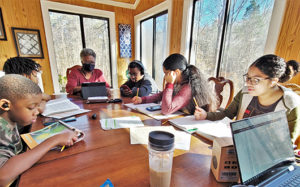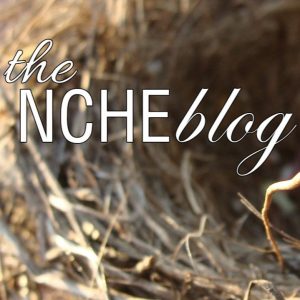 by Jessica Frierson, February 2022
by Jessica Frierson, February 2022
February is a great time to shine the spotlight on a few notable homeschooled black Americans. Each of these individuals defied great adversity to pursue an education for themselves and have left a legacy that impacts all of our lives today. They lived in a time when education was denied to them based on the color of their skin, yet they had an innate understanding that simply learning to read would open doors for them that would otherwise remain locked.
Today, the growth in homeschooling among black families signifies an incredible victory as they come full-circle, and parents can now hold the reins controlling their children’s education, regardless of their skin color. The low expectations that the educational system has for Black students is a common reason cited by Black parents choosing to homeschool. It also gives parents the opportunity to teach their children about their African roots, a subject typically missing in public school curriculum.
Phillis Wheatley, Benjamin Banneker, Lewis Latimer, and Frederick Douglas are among my favorite historical figures and offer commendable illustrations of the potential a self-taught individual can attain. They demonstrate the principle that a desire to learn is the most important part of an education. Limited resources, lack of support, and fears of not fitting into society’s expectations did nothing to hold them back from following their heart’s desire to learn, a lesson we would do well to remember in our homeschools today.
Phillis Wheatley
Phillis Wheatley was born in 1753 in Gambia, Africa. She was captured by slave traders in her childhood and brought to America on a ship named “the Phillis,” where she was bought by the Wheatley family. The family taught her to read, and within sixteen months, she was able to read British literature, Greek and Latin, and the Bible. Phillis developed a love for poetry and in 1767, at only 14 years old, Phillis’ first poem was published. She went on to become the first African American person, and second woman in America, to publish a book of poetry with her book “Poems on Various Subjects, Religious and Moral.” The book was published in 1783 and included a foreword by none other than John Hancock as well as a photo of Phillis as proof of her authorship. She was emancipated shortly after and went on to marry John Peters, a free Black man from Boston.
Benjamin Banneker
If you have ever visited our nation’s capital, you have traveled across the land that was surveyed by Benjamin Banneker. Born in Maryland in 1731 to an ex-slave and a former indentured servant, Benjamin was taught to read by his grandmother and, other than a short time at a Quaker school, was self-taught, borrowing books on astronomy and mathematics.
As a young man, Benjamin Banneker created a wooden clock that kept precise time for fifty years. He designed an irrigation system for his family’s farm. He became known for his accuracy in predicting solar and lunar eclipses.
Benjamin Banneker’s experience in astronomy led to his work on the surveying team that was mapping the territory of Washington, D.C. He spent three months in the observatory tent using a zenith sector to record the movement of the stars. He corresponded frequently with Benjamin Franklin. Like Franklin, Banneker published a series of almanacs, which included tidal charts for fishermen, astronomical calculations, and medical information. He also correctly calculated the life cycle of the 17-year locust and published articles on bees.
What I admire most about Benjamin Banneker however, is what he did in 1791. In a letter to Thomas Jefferson, then the Secretary of State and a slaveholder, Banneker respectfully called out the hypocrisy of Jefferson and other patriots for enslaving people like him while fighting the British for their own independence.
Lewis Latimer
Without the assistance of another home-educated Black man, the world would not equate the name Alexander Graham Bell with the telephone. Born on September 4, 1848, in Chelsea, Massachusetts, to former slaves, Lewis Latimer had to work to support his mother and siblings after his father disappeared following the 1857 Dred Scott decision. His father had been arrested after being recognized as a runaway slave. Frederick Douglass successfully defended him in court, but the Supreme Court’s ruling that enslaved people and their descendants, whether free or not, could not be American citizens and thus had no right to sue in federal court, caused Lewis’s father to fear recapture and return to slavery.
Latimer enlisted with the US Navy in 1864 at the age of fifteen, having lied about his age. At the conclusion of the war, Latimer began work as an office assistant in a Boston patent office. Latimer studied the drafters at work in the firm, learning enough about the mechanics of drawing and drafting to eventually be promoted to the position of head drafter.
Shortly thereafter, an instructor of hearing-impaired children sought out Latimer’s drafting skills to provide drawings of a device that the man had created. With Latimer’s help, Alexander Graham Bell was able to submit the patent application for the telephone on February 14, 1875, just a few hours before an application was submitted for a similar device by another inventor.
Lewis Latimer also had a hand in the invention of the light bulb. Thomas Edison’s bulb had a very short life span. Lattimore developed a way to give the bulbs a much longer life, making them both less expensive and more efficient. He continued “to improve on incandescent lighting as well as arc lighting. As more major cities began wiring their roadways for electric lighting, Latimer was selected to lead several planning teams. He helped install the first electric plants in Philadelphia, New York City, and Montreal. He also oversaw the installation of lighting in railroad stations, government buildings, and major thoroughfares in Canada, New England, and London.”
Eventually, Latimer began working with Edison himself and was the only Black member of a group of men who had worked closely with Edison in his early years, known as the “Edison Pioneers.” Other innovations by Latimer include a safety elevator; locking racks for hats, coats, and umbrellas that were used in restaurants and office buildings; and a method for making rooms more hygienic and climate-controlled.
Frederick Douglas
“Knowledge is the pathway from slavery to freedom,” was a maxim that Frederick Douglas lived by. Born into slavery, not even knowing the date of his birth, and separated from his mother from infancy, Frederick Douglass was moved to the Wye House Plantation at the age of 6 and then given to the Auld family in 1826. Sophia Auld began teaching the alphabet to Frederick when he was around 12, but soon stopped when her husband convinced her that literacy would encourage slaves to desire freedom. Overhearing this, Frederick later remembered the incident as the “first decidedly anti-slavery lecture” he had ever heard. “‘Very well, thought I,'” wrote Douglass. “‘Knowledge unfits a child to be a slave.’ I instinctively assented to the proposition, and from that moment I understood the direct pathway from slavery to freedom.”
Although his owners proceeded to hide the Bible and any other reading materials from Frederick, he continued to secretly learn from neighboring White children and any written works he could get his hands on. When he was hired out to a nearby plantation, Frederick began teaching other slaves to read at a weekly Bible study lesson, with up to 40 slaves in attendance each week. The discovery of this led to Frederick being sent to a “slave breaker” where he suffered brutal beatings.
In 1838 Frederick Douglass escaped from slavery – not by way of the Underground Railroad, as you might expect – but by riding a train from his home state of Maryland to the end of the line in Delaware. From there, he took a steamboat to reach Philadelphia, PA, and finally arrived safely in New York City.
Frederick Douglas went on to become a world-renowned abolitionist, writer, orator, and preacher. He traveled to Great Britain, Ireland, and Scotland. He joined the suffrage movement to give women the right to vote. He was an early advocate for schools to be desegregated. He was the most photographed person of the 19th century, believing that photography was a powerful tool in ending slavery and racism.
With its origin dating back to 1926, Black History Month is an opportunity to highlight the accomplishments of Black Americans and celebrate their many contributions to the world. As a homeschool community, we can be inspired by the achievements of Wheatley, Douglass, Latimer, Banneker and the vast number of self-taught Black men and women who utilized whatever means they could to attain an education.




